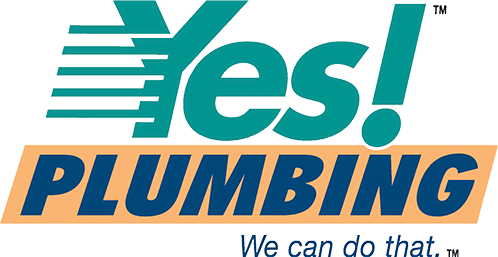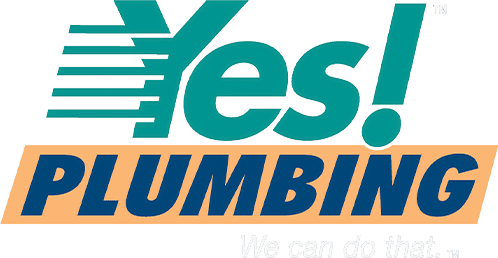- Take out the broken pump.
- Buy a pump.
- Put it in where the old one was.
Simple, right?
Wait a tick—-not so fast. There are many steps missing from this short “instruction” sheet.
Let’s start over. We’d like to provide a step by step instruction with appropriate pictures so that anyone who is so inclined might make their own attempt at a do it yourself on how to install a sump pump.
First, you need to choose the pump you want to have installed. There are many styles and sizes so you should determine the attributes you want before you head out to the Cheapot Depot, go online to make you purchase, or let your favorite plumber specify the pump.
Attribute number one is size of the motor. Residential pumps range anywhere from ¼ HP to over 1-1/4 HP. The size you choose should match or exceed the power you have needed in the worst rainstorm you have ever experienced at your home. If your old pump was able to keep up with that storm, choose a pump of that size as your replacement.
But that’s not the only criteria. You should also look at what pump engineers call the pump curve. This is a graph (see below) that shows in visual detail precisely how much water your pump will be able to remove in terms of gallons per minute at a given height of water pumping.

In layman’s terms, it tells you that if your pump discharge pipe rises, for example, 10 feet from the base of the pump before it turns and discharges the water horizontally, then the pump will remove, say, 50 gallons of storm water per minute.
Each pump will have its own unique pump curve and you can’t just assume that more horsepower (HP) equals more water removed.
At Yes! Plumbing we have already done this research and have specified pumps of American manufacture that that meet or exceed the maximum rainwater removal requirements in our geographic area.
Once you know the pumping specifications then it’s time to examine the quality of the pump and specify the construction requirements. Pumps are available in all sorts of configurations from the cheapest piece of “junk” to the very highest combination of construction attributes.
Rather than list all the hundreds of different pump attributes which you can choose from, let’s just list the specs for the pumps we use at Yes! Plumbing since we have already done the necessary research to insure that we only sell the highest quality pumps available.
For our 3 year, 5 year and 7 year guaranteed pumps, we chose pumps to be made to our exacting specifications by an American manufacturer with many years of experience.
Sump Pump Specifications
Here are the specifications for the construction and materials of each Yes! Plumbing pump and the reasons for each:
- Must be able to pump at a minimum 3,300 gallons of water per hour at 10 feet of head pressure.
- Must have a cast iron housing. No plastic or composite, no thin metal strap around the motor. Yes, it’s heavy, and yes it’s more expensive, but cast iron absorbs and dissipates heat much more efficiently. That translates to a much longer motor life.
- Must have an oil filled motor housing. This acts as a heat absorption and dissipator. Same benefits as number 1 above.
- Must utilize a non mechanical switch. Mechanical switches wear out. Mechanical switches require a transfer shaft. Transfer shafts require a seal and seals get hard and start leaking or stick. Non-mechanical switches use magnetic proximity and don’t exhibit any mechanical wear, not do they have rubber seals which can harden up, leak or stick.
- The activation float has to be one piece and sealed. No waterlogging allowed.
- The shaft has to be stainless steel. Stainless is harder and lasts longer than regular carbon steel.
- The bearings have to be ball bearings and should be continuously lubricated by the oil that fills the motor housing, preventing failure due to dry bearing runout.
- The pump must have a 1-1/2” discharge size. Cheaper pumps have only 1-1/4” discharge size which restricts water flow and can cause motor failure and overheat.
- The power cord has to have a removable seal in case of external damage or if we simply need a longer cord. That way we don’t have to buy a whole new pump if the dog chews the cord, etc.
- The float switch needs to be the piggyback configuration so we can easily isolate a power problem to the float or the pump. The piggyback configuration also allows for the operation of the pump manually in the event of a switch failure.
- The impeller should be polymer, not metallic, to resist corrosive effects from groundwater and waste products from laundry tubs, etc.
- The impeller should be protected by a screen to prevent impeller jamming from gravel, rocks and debris.
- The pump should be designed to handle up to ¾” diameter solids to prevent jamming from small debris that gets into sump pit from kid’s toys, animals etc.
- Hardware on the pump is stainless steel to avoid the corrosive effects of the water entering the sump pit.
- Mechanical seals should be ceramic to prevent hardening, splitting and leakage due to any detergent’s, corrosive water or chemicals introduced.
- The minimum guaranty period has to be at least 3 years and up to 7 years on high end models.
Sump Pump Installation Steps
Now that we have the guidelines for our pump construction and performance, let’s get to the installation.
You will need a saw or cutter capable of cutting PVC pipe, a tape measure, a drill, a 1/8” drill bit, a pencil or marker, a wrench that opens up at least 2-1/8”, your choice of pump (assuming it has a 1-1/2” discharge) , a 1-1/2” male PVC adapter, approximately 5 feet of 1-1/2” diameter PVC solid core pipe (more if your check valve is more than 3 feet above the pit lid), a check valve of the same size, PVC glue, PVC prime, and a connector fitting to adapt to your existing pipe in your home.
- Start by gluing the male adapter to the end of the pipe as follows. Be sure that there are no burrs in the pipe. To do this apply primer first to both the inside of the glue cup on the male adapter and the outside of the pipe from the end to about 1-1/2 inches up. While the primer is still wet (it evaporates quickly), apply glue first to the pipe in the same location as the primer, then to the glue cup of the fitting in the same place as the primer. Then, quickly push the male adapter onto the pipe with a twisting motion. Be sure to hold the adapter forcefully in place for at least a count of 15. If the adapter pushes itself partially off of the pipe because of failure to follow this procedure, discard the adapter and start over.
- Disconnect and discard the existing check valve from the discharge piping.
- If your pit lid is not of the slotted type but only has a single hole, lift the lid up and over the pipe and set aside for later installation.
- After successfully gluing the adapter onto the pipe in step one, measure from the bottom of the adapter threads to a point 12” from that point and place a mark on the pipe. Drill a 1/8” size hole at that mark. This prevents the pump from air locking which can cause short cycling and premature pump failure.
- Now screw the pipe and male adapter assembly into the pump discharge tapping on the pump. Be sure to place your tightening tool on the adapter and NOT the pipe itself. This does not have to be super-tight as a small amount of dripping or leakage does not cause a problem.
- Be sure to hold the pump by a provided handle and not the cord or the pipe you just installed and set the pump into the pit so that it rests on the legs on the bottom. If the pit has a gravel bottom place some bricks or cut up patio block in the bottom to set the pump legs on so gravel does not get sucked up into the check valve or impeller.
- The pipe you installed should now be higher than the pipe from which you removed the old check valve. If not, you will need more pipe and a coupling.
- Before the next step, if your lid has a single hole (see step 3), install the lid over the pipe at this time.
- Rotate the pump as required with the new pipe so that the lid fits properly on the top of the pit and the discharge pipe lines up with the existing pipe above. Mark the new discharge pipe where it meets the old discharge pipe.
- Measure the new check valve to see how much space there is between the bottom inside part of the check valve and the top inside part of the check valve.
- Measure that distance down from the mark you made in step 9 and cut the pipe at that point. Discard the left over pipe.
- Now measure 6” down from the end of the new discharge pipe, plus any necessary amount for the fitting you will need to connect to the old pipe and cut the new discharge pipe off at that point.
- Now glue that resulting piece of pipe into the discharge end of the check valve being careful not to get any glue inside the check valve.
- Glue the check valve assembly onto the discharge pipe from the pump.
- Make the final connection to the existing pipe using the proper adapter for your existing pipe configuration.
- Finally after allowing the glue to set per manufacturer’s instructions (found on the container), plug in the pump to insure it will cycle on and off properly.
We are happy to provide our Yes! Plumbing clients and prospective future clients in the Schererville area with this helpful article on choosing and installing your sump pump.
Please feel free to contact us if you have any questions or would like to get a quote one our high quality pumps or installations.


.2303101152550.jpg)